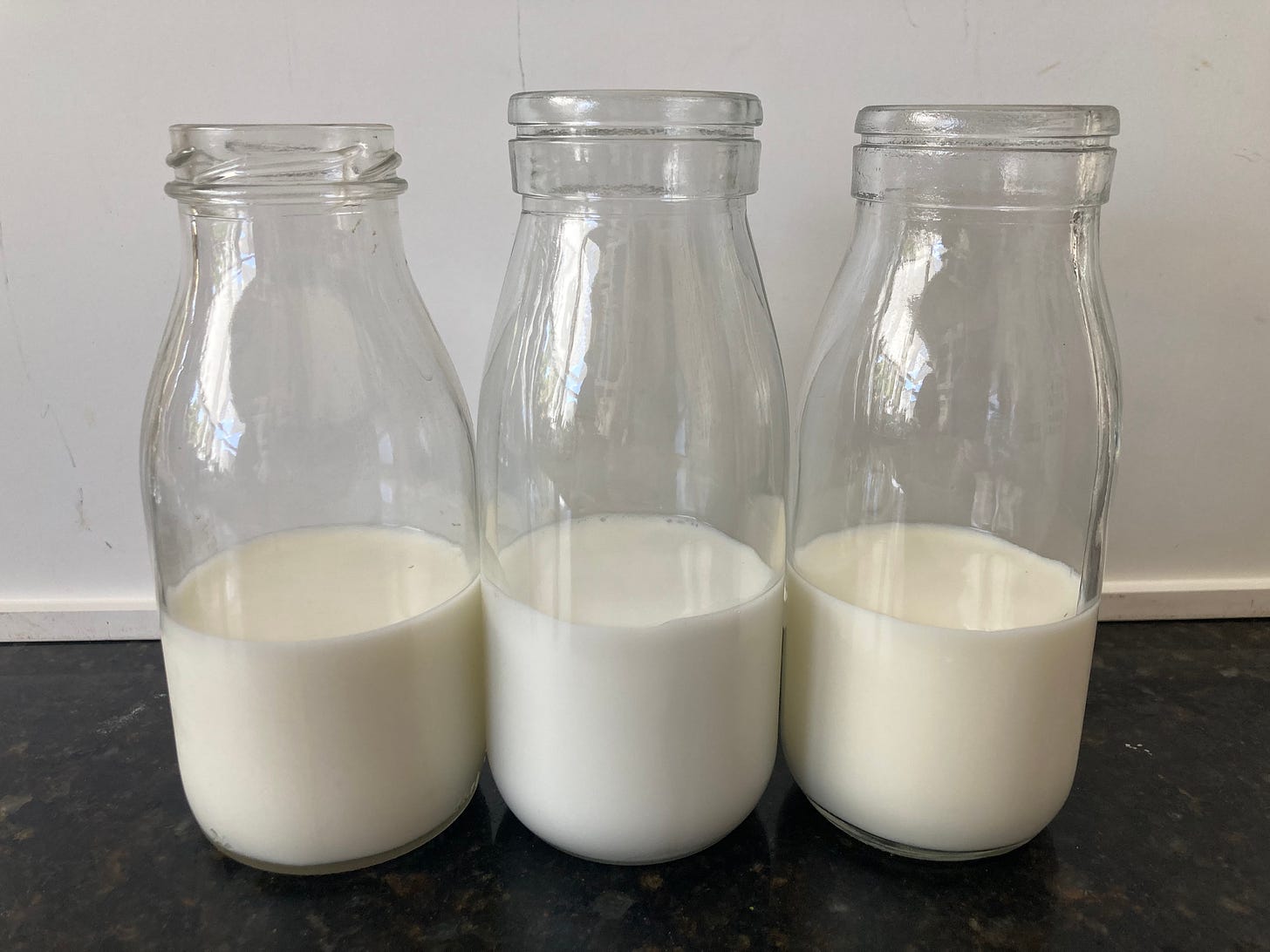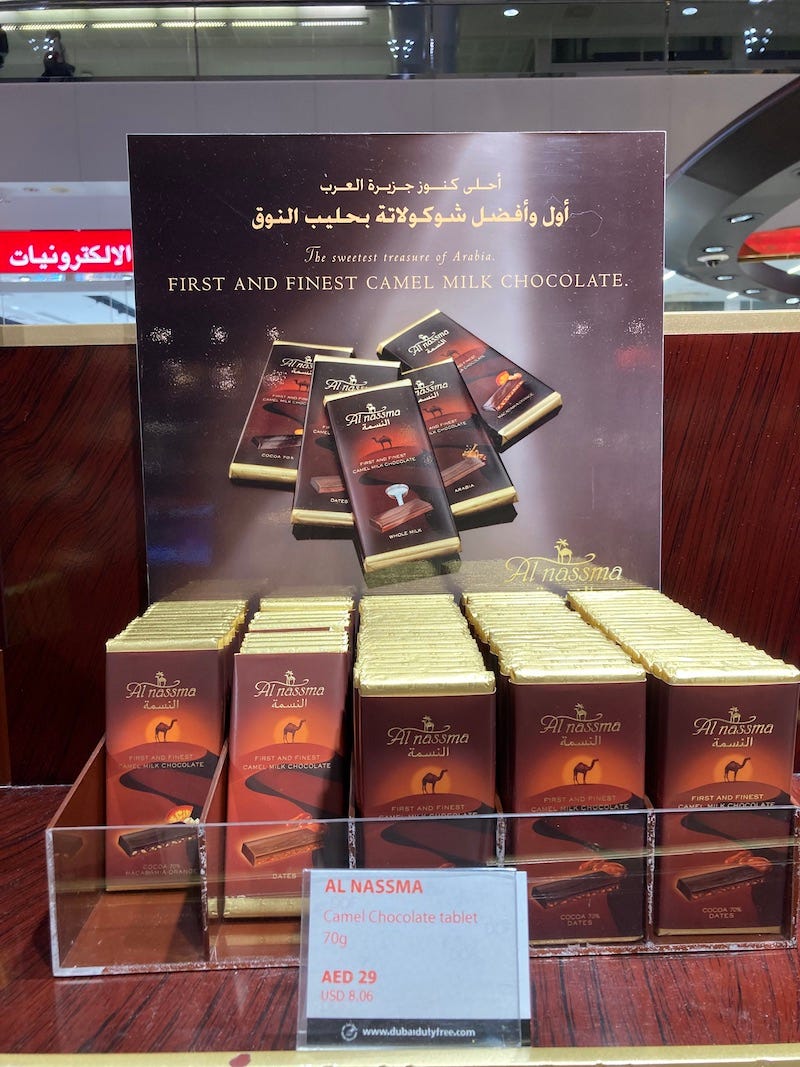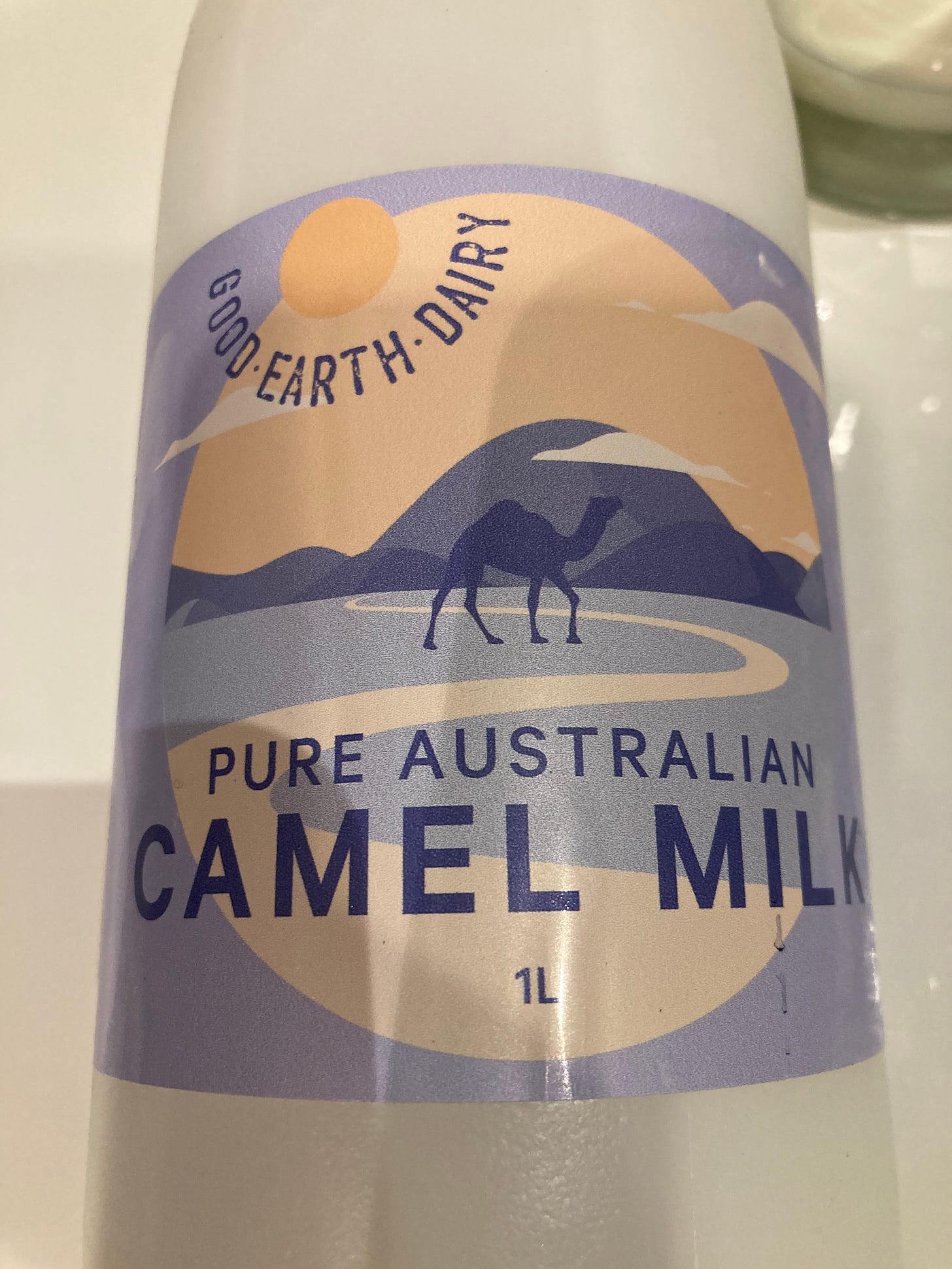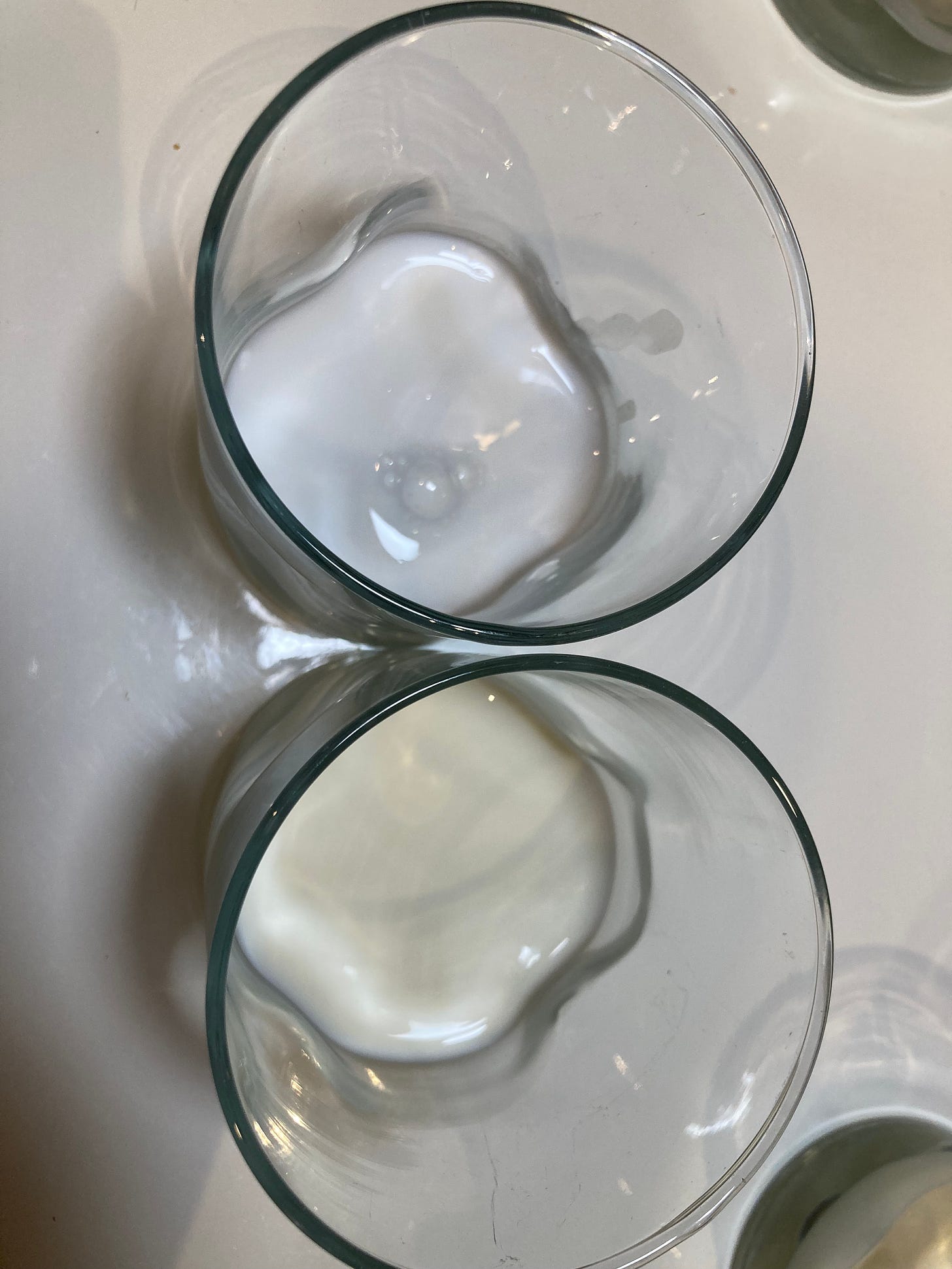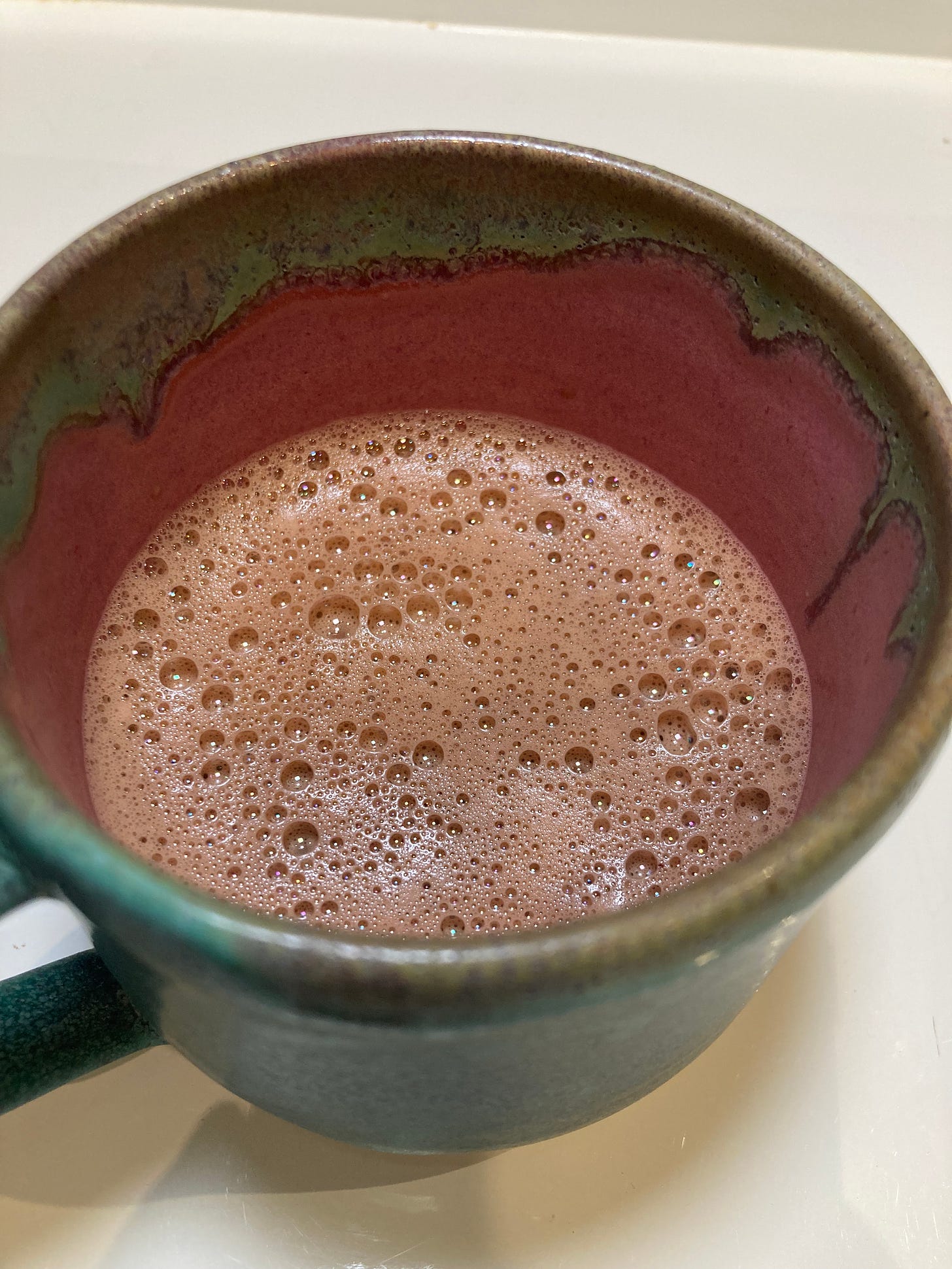Camel Milk Chocolate Anyone?
A primer on camel milk and a few chocolates in Dubai
Happy Monday to you all!
This week I have been exploring the world of camel milk. It all started with a recent trip via Dubai where I spent a few very jet lagged hours. After my attempts to find Butler’s Chocolate to try their hot chocolate failed (I was in the wrong Concourse), I ended up at Comptoir Libanais. They offer a very nice milk chocolate infused with cinnamon and tahini with halva sprinkled on top.
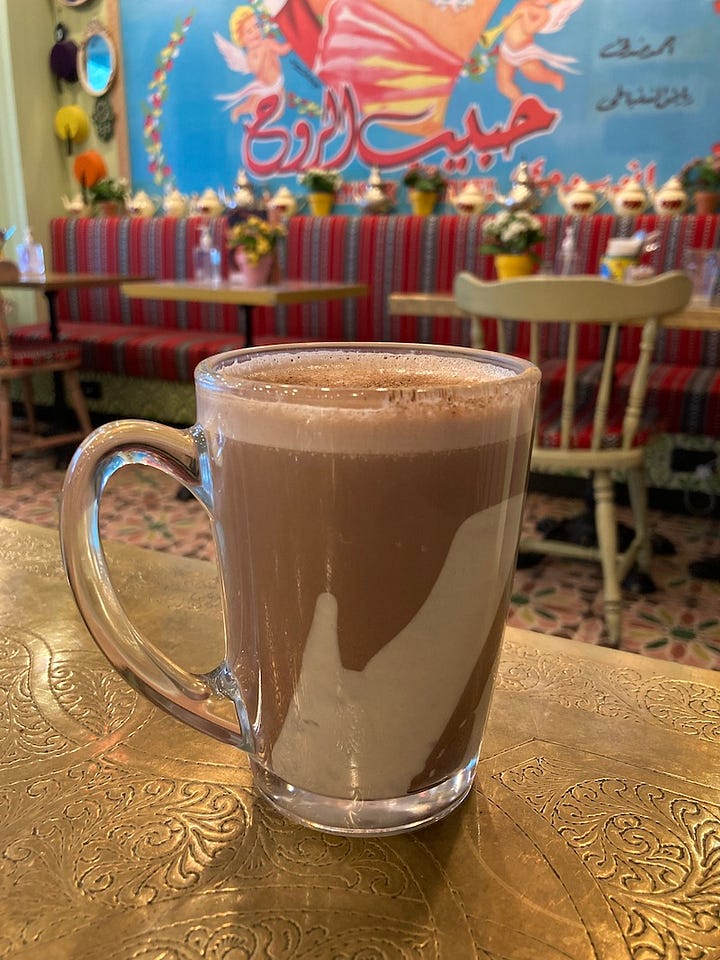
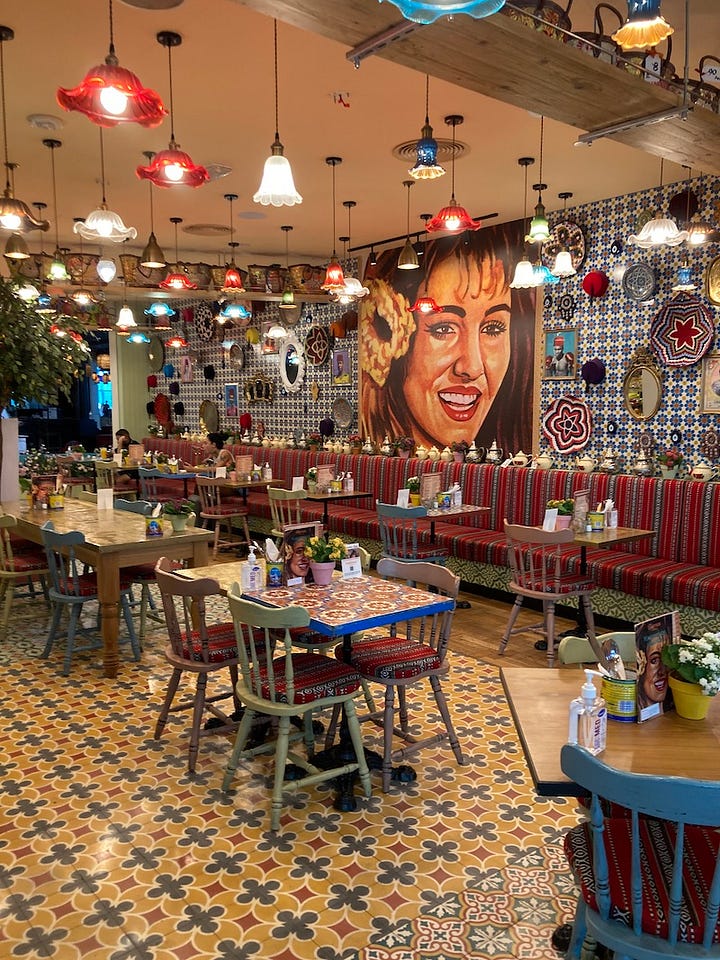
I was hoping to try a camel milk hot chocolate but it seems that all the restaurants in Dubai airport are from the UK (are the restaurants in UK airports all Middle Eastern?).
While walking through the airport it is impossible to miss Al nassma chocolate. Al nassma makes milk chocolate bars using camel milk. Founded in 2008, apparently they have 3,000 camels that they milk twice daily (I say apparently because they don’t really have a website, but there are quite a few articles on the web about them). Some of the milk is bottled and sold locally, some is freeze dried to be used in chocolate. There is 21% camel milk powder in their bars (in addition to sugar, cocoa butter, cocoa mass, honey and bourbon vanilla). Interesting although it says made in UAE, the information I found suggests that the milk is sent to Austria where it is turned into chocolate and then sent back to Dubai (and other countries) to be sold.
Camels in Australia
One thing that you may not realise is that there are actually more camels in Australia than there are in the Middle East. In the 1840s, thousands of camels were imported to Australia to assist with work in the outback where the conditions are dry and difficult. Those thousands are now over a million. We came across big groups of wild camels when we drove across the outback last year. They are feral here, but efforts to create a market for the meat and milk have largely failed. There is a very small industry for camel milk and we are lucky enough in Perth to be able to buy fresh camel milk from a farm just 2 hours away. Apparently camels will only let humans milk them if they feel relaxed and safe. Smart camels.
What does it taste like?
We did a taste test comparing our usual full fat milk with camel milk. The price is already a big difference ($15 for a litre of camel milk versus $5 for milk). For that reason alone I won’t be switching to camel milk anytime soon. The cows milk smells and tastes a lot sweeter. I had never realised how much sweetness is in cows milk until now. The camel milk on the other hand is much more watery and has a definite salty taste. It doesn’t have a particular flavour (apart from salty). It does taste very fresh, like it would be a great drink on a hot summer day (which I plan to try!). It has significantly less fat which changes the way it feels in the mouth too. It is also much whiter in colour than cow’s milk (see picture below), not that that means anything, just interesting to note.
A few details from the back of the containers:
Sugar: 3.2g per 100 camel. 4.4g per 100 cow
Fat: 2.5g per 100 camel of which 1.2 saturated. 3.6 per 100 of which 2.2 saturated
Sodium: 90mg per 100ml camel, 40g per 100ml cow
Potassium: 220mg in camel but nothing in cow
Calcium: 130mg in camel vs 120mg in cow
Energy: 210 kilojewls per 100ml, 271 in cows milk
Protein: 3.6g per 100 for camel and 3.3g for cow
Camel milk is rich in calcium, magnesium, zinc, iron and contains three times more vitamin C. It also has less saturated fats than milk. Camels produce much less milk than cows, 6 litres per day vs 24 litres per day for a cow. It also contains less lactose. Similar to chocolate, if you search for health benefits of camel milk you come up with all sorts of impressive but not necessarily scientifically backed claims that it cures everything from autism, to diabetes, even cancer.
I made a few hot chocolates using the camel milk and the dark chocolate worked best for me. A bit of salt actually brings chocolate to life so the saltiness of the camel milk was a nice addition. I did find it needed a bit more chocolate than I would usually use in a cow’s milk hot chocolate to balance the saltiness.
I did a search looking for other chocolate makers or even chocolates using camel milk in their offerings, but I didn’t find much. QCamel makes chocolates using camel milk that they farm here in Australia. Mission Chocolate in Brazil also had a limited edition Camel Milk Bar to celebrate the Arabs who make up Brazilian culture. She used powdered camel milk from Dubai.
Has anyone else tried camel milk chocolate or tried to use camel milk in their chocolates? I’d love to hear about it.
THIS WEEK’S HOT CHOCOLATE NEWS
Chocolate Monkey has a new series on how to be a better taster on Instagram.
My favourite hot chocolate festival is on right now in Vancouver:145 flavours in 95 locations. Chez Christophe Chocolatierie for example offers a Canadian Winter with a Kick Hot Chocolate with 41% milk chocolate with cayenne, chilli powder, cinnamon, maple syrup paired with a small, spicy bacon pull-apart. If that doesn’t interest you, they also have a butter beer 34% white chocolate infused with butterscotch and butter flavoured popcorn milk with a mystery lollipop on the side.
Industry funded study of the week: ultra-processed foods are ok, really
After five years, recipe to end deforestation from cocoa remains elusive
Callebaut has recently launched 2nd Generation Chocolate (which looks like what craft chocolate is doing, and the way chocolate has been made most of its history so I’m not sure what is 2nd generation about it, but still good that Callebaut is engaging).
If you are in Austria, visit Zotter Chocolate and read this article to find out why
The usual pre Valentine Day chocolate articles are starting early. This one from the Guardian on whether ethical and affordable chocolate is possible.
Thanks for reading and have a great week!
Giselle
Chief Chocolate Sipper at www.ultimatehotchocolate.com. Follow on Instagram @ultimatehotchoc


